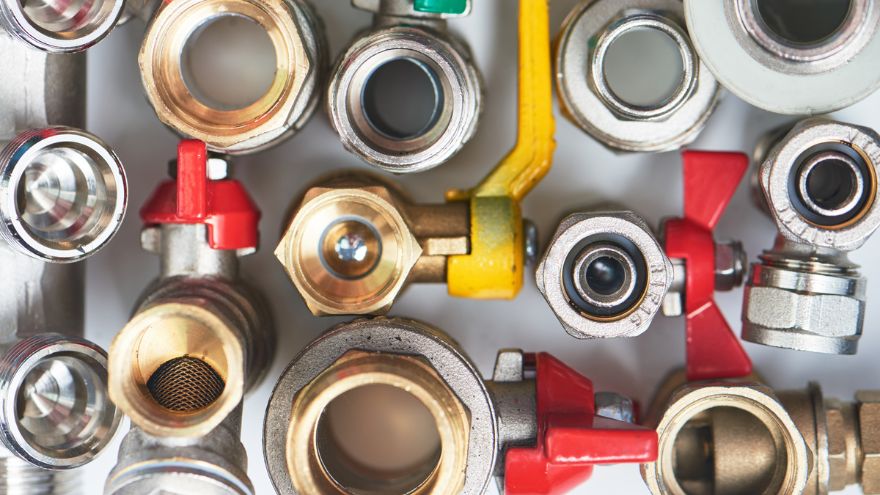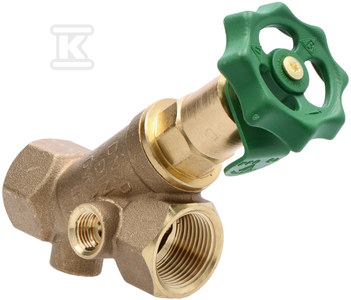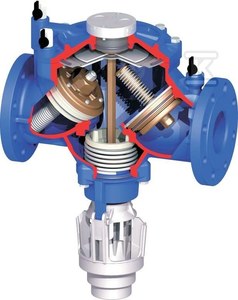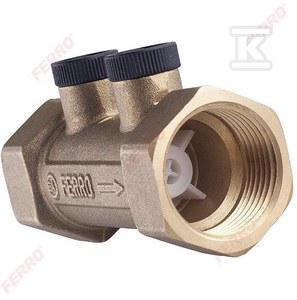There are solutions that significantly improve the safety of use, and here we mean, for example, an anti-contamination valve. It is worth learning more about it and learning the rules for securing the water supply network in the building.

Check anti-contamination valves at the Onninen wholesaler
What is an anti-contamination valve?
 An anti-contamination valve is a small mechanical device used to protect the water supply network in a building. It is worth knowing that various types of contamination may appear as a result of reverse flow. They then constitute a potential pathogenic threat. There are several types of anti-contamination valves , which are selected according to the building or installation. We distinguish here BA valves . These are mainly backflow isolators. They are used in public places and multi-family buildings. In heating systems without inhibitors, anti-contamination valves from the CA family are used. There is also an EA family. These valves are extremely sensitive to pressure fluctuations.
An anti-contamination valve is a small mechanical device used to protect the water supply network in a building. It is worth knowing that various types of contamination may appear as a result of reverse flow. They then constitute a potential pathogenic threat. There are several types of anti-contamination valves , which are selected according to the building or installation. We distinguish here BA valves . These are mainly backflow isolators. They are used in public places and multi-family buildings. In heating systems without inhibitors, anti-contamination valves from the CA family are used. There is also an EA family. These valves are extremely sensitive to pressure fluctuations.
Current construction law regulations require that each new building be equipped with a water supply system with anti-contamination valves. They should meet the PN-EN 1712 standards. In Poland, the PN-92/B-01706 standard has been in force since 1992. It concerns the design of water supply installations. However, at that time there was no requirement to use anti-contamination valves. You can only read statements about general safety rules.
The regulations changed in 1999 when Annex Az1 was introduced. It was then that the recommendations of pan-European standards came into force. In 2003, the PN-EN 1717:2003 standard was published, in which you can read how important it is to introduce solutions that prevent secondary water contamination in water supply installations. The use of anti-contamination valves is now necessary to prevent contamination of drinking water. It is worth being aware that reverse flow may occur when the pressure in the water supply system drops. This happens, for example, when a cable breaks or a major pump failure occurs. Backflow can also occur when there is backpressure from a source outside the plumbing. Water pollution would then pose a very serious health risk. For this reason, an anti-contamination valve should be used to prevent this type of safety.
How does the anti-contamination valve work?
The anti-contamination valve is very simple  mode of action. It opens access to atmospheric air inside the installation. This happens when negative pressure occurs. The valve prevents contaminated water from being sucked into the installation. It prevents water from flowing back. Of course, you should always carefully check the tightness of the non-return valve. These types of devices have an inspection hole located on the drain side. You should also know that when the shut-off valve upstream of the anti-contamination valve is closed, there should be no further leakage.
mode of action. It opens access to atmospheric air inside the installation. This happens when negative pressure occurs. The valve prevents contaminated water from being sucked into the installation. It prevents water from flowing back. Of course, you should always carefully check the tightness of the non-return valve. These types of devices have an inspection hole located on the drain side. You should also know that when the shut-off valve upstream of the anti-contamination valve is closed, there should be no further leakage.
The operation of the anti-contamination valve is based on specific phenomena. In this case, the vacuum breaker opens automatically as the pressure drops. Thanks to this, there is no pressure difference in the inlet direction, and the non-return valve closes when water flows in the reverse direction. Aeration can occur naturally due to atmospheric pressure and this is also important to be aware of.
Where should the anti-contamination valve be installed?
 Legal regulations require the installation of an anti-contamination valve. It should be located at each connection of the internal cold water supply system or external installation on the building plot with the water supply network. In this case, a main water meter kit should be installed. Therefore, it is best to install the anti-contamination valve at the initial point in the water supply network.
Legal regulations require the installation of an anti-contamination valve. It should be located at each connection of the internal cold water supply system or external installation on the building plot with the water supply network. In this case, a main water meter kit should be installed. Therefore, it is best to install the anti-contamination valve at the initial point in the water supply network.
A suitable place will be the section behind the water meter from the installation side. Many people wonder whether the anti-contamination valve can be mounted vertically. The answer is yes. It can be installed in both vertical and horizontal installations, provided that the medium flows from bottom to top. It must also be possible to take water samples. The Regulation of the Minister of Infrastructure of April 12, 2002 imposes the obligation to install an anti-contamination valve behind each set of the main water meter on the installation side.